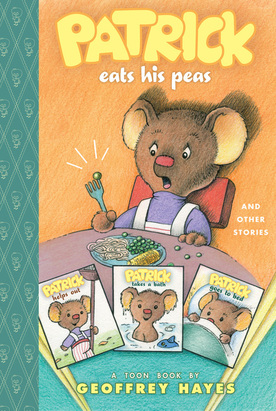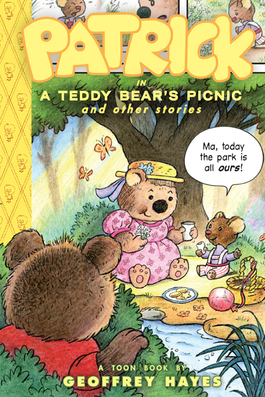PEARL S. BUCK WON THE NOBEL PRIZE IN LITERATURE in 1938 "for her rich and truly epic descriptions of peasant life in China and for her biographical masterpieces." Her bestselling, Pulitzer Prize winning novel The Good Earth, detailing peasant life in China, remains a perennial classic. Born to American Southern Presbyterian missionaries, Buck moved to China at the age of three months and lived there until she returned to the United States for college. Despite growing up in a country that did not celebrate Christmas, Buck's family and the families of other American missionaries, along with the English who lived in the British Concession, made Christmas with all the joyous trimmings of home: trees and holly, stockings and presents, parties and feasts. "From such memories of my Chinese childhood," Buck wrote, "it is no wonder that when I had an American home of my own, complete with husband and children, every Christmas was as joyous as we could make it."
 For Buck, a large part of that celebration was telling stories, many of which she recorded and published in magazines and as books. "I told my children many stories when they were small enough for bedtime stories, and each year they chose one to make into a book. The Christmas stories, of course, were always special." They included stories such as "A Certain Star," "The Christmas Ghost," "The Christmas Mouse," "Christmas Day in the Morning," and many others, which appeared in special Christmas issues of magazines like Good Housekeeping, Family Circle, Ladies' Home Journal, and Collier's before being reissued as books.
For Buck, a large part of that celebration was telling stories, many of which she recorded and published in magazines and as books. "I told my children many stories when they were small enough for bedtime stories, and each year they chose one to make into a book. The Christmas stories, of course, were always special." They included stories such as "A Certain Star," "The Christmas Ghost," "The Christmas Mouse," "Christmas Day in the Morning," and many others, which appeared in special Christmas issues of magazines like Good Housekeeping, Family Circle, Ladies' Home Journal, and Collier's before being reissued as books.In "Christmas Miniature," a 1956 special insert in Family Circle with art by the Walt Disney Studio, six-year-old Sandy makes the midnight trip downstairs "not indeed to peep at the Christmas tree but only to see what time it was." In so doing, he finds his cat Snips about to eat a mother mouse hiding behind the miniature manger under the tree. He grabs the mouse first, who bites him to escape his grasp, and dashes under the couch to return to her babies. The story was published as a book the next year with illustrations by Anna Marie Magagna, and included in Buck's Once Upon a Christmas with illustrations by Donald Lizzul (seen below).
"The Christmas Ghost," which first appeared in a 1960 issue of Family Circle with illustrations by Gyo Fujikawa, tells the story of Jimpsey, a young boy whose family is celebrating their first Christmas in their new farm house after leaving the city. Mr. Higgins, the hired hand, tells Jimpsey that the ghost of the former owner Timothy Stillwagon walks from the barn to the bridge over the brook every Christmas Eve. When Jimpsey goes out in the middle of the night to see, he only finds Mr. Higgins there, who explains that it is the memory of Timothy Stillwagon that walks with him those nights, and that is what he meant by ghost.
Buck's own gardener "always insisted that the ghost of Old Devil Harry did walk every Christmas Eve at midnight from the big red barn to the bridge, to meet the ghost of a former crony with whom he used to get drunk each Christmas Eve." In the story, Mr. Higgins and Timothy Stillwagon meet to admire each other's Christmas trees. Like "Christmas Miniature," "The Christmas Ghost" appeared as a book almost immediately with illustrations by Anna Marie Magagna. The story was included in Once Upon a Christmas as well.
A story that Buck for some reason did not include in Once Upon a Christmas is "Christmas Day in the Morning," a story that first appeared in Collier's in 1955 (see art at top). "Christmas Day in the Morning" tells of how Rob, the eldest son of a farmer, realizes that the best gift he can give his father for Christmas is to wake up extra early and do the milking before his father has even gotten out of bed. This act grew out of the realization that his father truly loved him when he overheard his father saying to his mother how much he hates to wake Rob in the mornings. When his father finds the milking done, they hug in the darkness, unable to see each other's faces, but communicating their mutual love better than they have ever done before.
"Christmas Day in the Morning" was not strictly a children's story when it was published in Collier's, but it was made into a picture book posthumously in 2002 with some light editing, which removed the adult Rob's memories of his dead wife as well as his dead father. Illustrator Mark Buehner was inspired to illustrate the story after his own children woke up in the middle of the night one Christmas Eve to clean the entire downstairs floor of his house after hearing Buck's story at church, a testament to how touching Buck's work remains decades after her death.
THESE THREE STORIES are really just the tip of the iceberg when it comes to Pearl S. Buck's Christmas stories for children. That's an understatement when it comes to Pearl S. Buck's children's books on whole, one reason that I have waited so long to tackle her on the blog. I had hoped to have more editions of these stories and some others before Christmas this year, but I waited a bit too long to secure them in time, so there will be some follow up posts possibly into the new year. As a result, I made a very rare exception to one of my rules, which is to have borrowed some scans, from I'm Learning to Share! for the "Christmas Miniature" Family Circle cover, and from The Estate Sale Chronicles for the "Christmas Ghost" cover. In both cases, the original blogs have the entire stories scanned and available to read, so please do click through. The rest of the scans are my own.
If you are looking for more Christmas fun, check out previous year's posts:
J.R.R. Tolkien's "Father Christmas Letters"
Eleanor Roosevelt's Christmas
Warren Chappell's The Nutcracker
Ilonka Karasz's The Twelve Days of Christmas
All images are copyrighted © and owned by their respective holders.
















+-+001.jpg)




